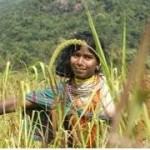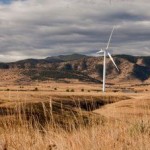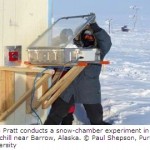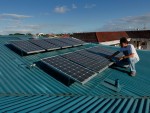Ecuador
The Republic of Ecuador holds 5.2 Gt of land-based carbon. The majority of this carbon is located in the rainforests of the Amazon region and the foothills of the Andes. Nationally identified areas of importance for biodiversity conservation hold 15% of the country’s biomass carbon.
Over the next seven years, Ecuador’s Socio Bosque Programme aims to conserve more than 3 million hectares of native forest and other vegetation at sites selected according to criteria related to carbon, biodiversity, other ecosystem services and livelihoods, and will have between 500,000 and 1.5 million beneficiaries. Presently, sites already included in the Socio Bosque Programme contain about 5% of the country’s biomass carbon. This figure could grow to over 30% if all the high priority sites are incorporated into the Programme.
Honduras
The total, land-based carbon stock of Honduras amounts to almost 2 Gt; the most carbon-rich fifth of the country holds over a third of total carbon stock.
In Honduras, Protected Areas cover 18% of land area and hold 27% of the country’s total carbon stock. Protected Areas contain 48% of the country’s high carbon density area, and 55% of area where high carbon and biodiversity priority overlap.
Nigeria
The Federal Republic of Nigeria holds 7.5 Gt of land-based carbon. The largest areas of high carbon density are found in the southern parts of the country, mostly along the Niger Delta and in the rainforest regions.
Approximately 4% of Nigeria’s total land-based carbon stock is in areas of importance for bird species {Important Bird Areas (IBAs)}, and more than 8% is found in Nigeria-Cameroon chimpanzee distribution areas. Significantly, about 15% of Nigeria’s carbon stock is inside existing Protected Areas and 86% of the carbon within IBAs is protected.
As Africa’s primary oil producer, Nigeria has allocated a considerable amount of land for the purposes of oil and exploration. Understanding how this land is distributed relative to carbon stocks can help identify where carbon stocks may come under pressure from oil and gas development in the future. Approximately 13% of Nigeria’s total carbon stock (0.97 Gt) is located in land that has been designated for oil and gas exploration.
Tanzania
Tanzania’s total land-based stock of carbon is estimated to be close to 12 Gt. The Kilimanjaro region, at 359 tonnes per hectare, and the Kagera region at close to 200 tonnes per hectare have the highest density of carbon in their vegetation and soils.
Tanzania is rich in biodiversity, with 359 mammal species and 183 species of amphibians. Species range data indicate that many areas potentially rich in mammals and amphibians coincide with areas of high carbon density.
The country’s Protected Areas network stores around a third of national carbon stocks. However, nearly a quarter of the country’s carbon is found in areas of high carbon density that are currently outside formal Protected Areas.
One source of pressure on carbon stocks in Tanzania is human-caused fires. In 2006-2007 such fires may have affected 180 Mt of biomass carbon. Of this amount, 30% occurred in high carbon density areas, which are most likely to suffer long-term fire damage to carbon stocks.
Notes:
All reports are publicly available and downloadable on the following sites:
The carbon and co-benefits mapping work being carried out by UNEP-WCMC and country partners has kindly been made possible through contributions from two funding sources: the German Federal Ministry for the Environment, Nature Conservation and Nuclear Safety (www.bmu.de/english/aktuell/4152.php), and the UN-REDD Programme (www.un-redd.org).
The UN-REDD Programme is a collaborative partnership between the UN’s Food and Agriculture Organization (FAO), the UN Development Programme, and UNEP. The Programme supports countries to develop capacity to reduce emissions from deforestation and forest degradation and to implement a future REDD+ mechanism in a post-2012 climate regime.
The 10th Conference of the Parties to the UNEP-linked Convention on Biological Diversity: www.cbd.int/cop10
The sixteenth Conference of the Parties (COP) and the sixth Conference of the Parties serving as the meeting of the Parties to the Kyoto Protocol: www.unfccc.int
REDD+ has been proposed as a mechanism under the UN Framwork Convention on Climate Change (UNFCCC). The aim of REDD+ is to contribute to climate change mitigation by maintaining and enhancing forest carbon stocks in developing countries. REDD+ encompasses the following activities: Reducing Emissions from Deforestation and Forest Degradation (REDD); and conservation of forest carbon stocks, sustainable management of forests, and enhancement of forest carbon stocks (+).
Source: UNEP Press Release dated October 18, 2010.














